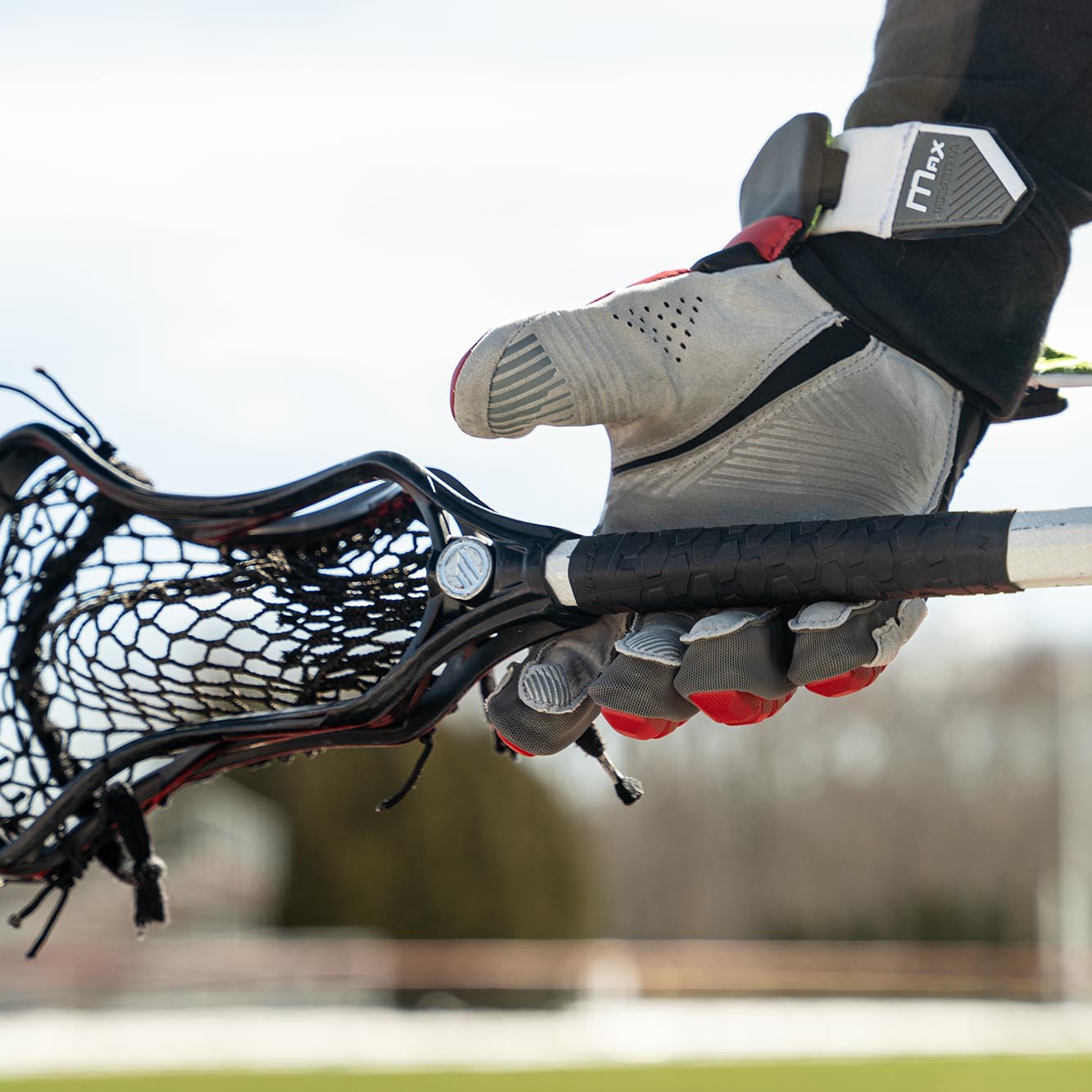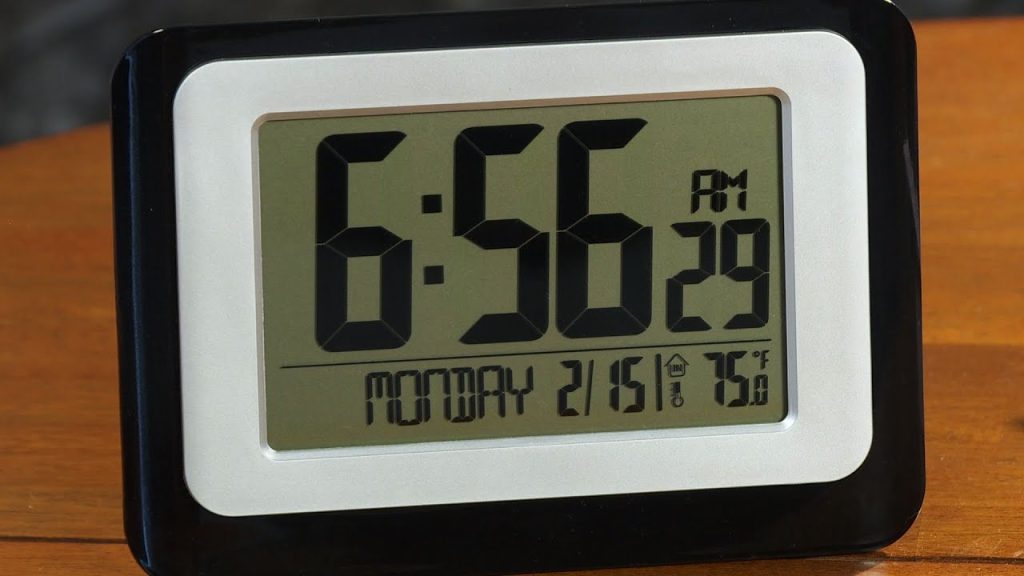Gripping a lacrosse stick may seem easy. But, it’s crucial for good play.
A proper grip improves control, accuracy, and power in your shots and passes. Whether you’re new to lacrosse or looking to refine your skills, understanding how to grip your stick correctly is essential. The right grip can enhance your performance and prevent injuries.
In this guide, we’ll explore the fundamentals of gripping a lacrosse stick. We’ll discuss hand placement and common mistakes. By the end, you’ll know how to hold your stick like a pro, giving you the confidence to excel on the field. Let’s dive in and get a grip on the basics.
Choosing The Right Stick
Choosing the right lacrosse stick can make a big difference in your game. The right stick helps you control the ball and shoot accurately. In this section, we will explore the key factors to consider when selecting a lacrosse stick.
Stick Length
The length of your lacrosse stick is crucial. Different positions require different lengths:
- Attack and Midfield: These players usually use sticks between 40 and 42 inches.
- Defense: Defensive players prefer longer sticks, often between 52 and 72 inches.
- Goalie: A goalie stick ranges from 40 to 72 inches, depending on personal preference.
Choose a stick length based on your position. A proper length ensures better control and handling.
Stick Material
The material of the lacrosse stick affects its weight and durability. Here are the common materials:
| Material | Features |
|---|---|
| Aluminum | Lightweight and affordable, suitable for beginners. |
| Composite | Durable and flexible, ideal for advanced players. |
| Titanium | Strong and lightweight, best for experienced players. |
Consider your experience level when choosing a stick material. Beginners might start with aluminum, while seasoned players might prefer composite or titanium for better performance.
Understanding Stick Anatomy
Understanding the anatomy of a lacrosse stick is essential. It helps improve your grip and control. A lacrosse stick has three main parts. These are the head, shaft, and butt end. Each part has a unique function. Let’s dive into each of them.
Head
The head is the top part of the stick. It holds the mesh pocket. This is where you catch, cradle, and throw the ball. Heads come in different shapes and sizes. Some are wider for easy catching. Others are narrow for better ball control. Choose a head that fits your playing style.
Shaft
The shaft is the long, middle part of the stick. It connects the head to the butt end. Shafts are made from various materials. Aluminum, titanium, and composite are common. Each material affects weight and durability. Aluminum is light and affordable. Titanium is stronger but more expensive. Composite offers a mix of both. Pick a shaft that feels comfortable in your hands.
Butt End
The butt end is at the bottom of the stick. It is often capped with a rubber or plastic piece. This cap prevents the stick from slipping out of your hands. The butt end also provides balance. A good grip on the butt end improves control and power. Make sure the butt end is secure and comfortable.
Proper Hand Placement
Proper hand placement on a lacrosse stick is crucial for control and power. Knowing where to place your hands will enhance your performance. Let’s break down the top and bottom hand positions.
Top Hand Position
Your top hand should grip the stick near the top. This grip allows for better control. Your thumb should point up the shaft. Hold the stick lightly with your fingers. This way, you can maneuver the stick easily. The top hand is responsible for guiding the stick.
Bottom Hand Position
Place your bottom hand near the butt end of the stick. Your bottom hand provides power. Grip the stick firmly with your whole hand. This grip helps in generating strong passes and shots. Ensure your bottom hand stays steady during movements. Together, these hand positions will improve your game.
Grip Techniques
Mastering the proper grip techniques is essential for any lacrosse player. The way you hold your lacrosse stick can affect your performance. Here, we’ll discuss two main grip techniques: the Power Grip and the Cradle Grip. Both are crucial, and knowing when to use each can improve your game.
Power Grip
The Power Grip provides control and strength. This grip is used for shooting and passing. To use the Power Grip, place your dominant hand near the bottom of the stick. Your non-dominant hand should be positioned just below the head of the stick. Ensure your knuckles face up and your thumbs point down the shaft.
- Dominant Hand: Near the bottom, gripping firmly
- Non-Dominant Hand: Below the head, slightly relaxed
- Knuckles: Face up
- Thumbs: Point down
This grip allows you to generate powerful shots and accurate passes. Keep your wrists flexible to adjust the stick’s angle quickly. Practice the Power Grip to build muscle memory and enhance your gameplay.
Cradle Grip
The Cradle Grip is essential for ball control and protection. To use this grip, hold the stick with your dominant hand near the middle. Your non-dominant hand should be near the bottom. The stick should rest in your fingertips, and your wrists should be loose. This grip allows you to cradle the ball smoothly while running.
- Dominant Hand: Middle of the stick
- Non-Dominant Hand: Near the bottom
- Fingertips: Lightly hold the stick
- Wrists: Stay loose
Cradling keeps the ball secure and prevents turnovers. It’s vital during fast breaks and dodges. Practice switching between the Power Grip and Cradle Grip to adapt to different in-game situations.
Improving Grip Strength
Improving grip strength is essential for any lacrosse player. A strong grip helps you control the stick better. It makes your shots and passes more accurate. It also reduces the risk of injury. Let’s explore how to improve your grip strength with some simple exercises and consistency.
Exercises
Start with basic hand exercises. Squeeze a stress ball for a few minutes daily. Use a grip strengthener tool. These tools are small and easy to use. Practice wrist curls with light weights. Hold a dumbbell and curl your wrist up and down.
Another exercise is the farmer’s walk. Hold a heavy object in each hand. Walk for a few minutes. This builds both grip strength and endurance. Try dead hangs from a pull-up bar. Hang for as long as you can. Gradually increase the time.
Consistency
Consistency is key to improving grip strength. Make these exercises a part of your daily routine. Practice them regularly. Even a few minutes each day can make a big difference. Track your progress. Note the weights you use and the time you hang.
Stay patient and committed. Grip strength improves over time with regular effort. Include grip strength exercises in your warm-up or cool-down. This makes it easier to stay consistent. Remember, a strong grip enhances your overall lacrosse performance.

Credit: www.youtube.com
Common Mistakes
Gripping a lacrosse stick correctly is crucial for control and accuracy. Many players make common mistakes that hinder their performance. Understanding these mistakes will help improve your grip and game.
Overgripping
Overgripping the lacrosse stick is a common error. Many players hold the stick too tightly. This can cause tension in your hands and arms. It affects your ability to maneuver the stick smoothly. A firm but relaxed grip is essential. This allows better control and reduces fatigue.
Incorrect Hand Placement
Incorrect hand placement is another frequent mistake. Players often place their hands too close together. This limits control and power. Your top hand should be near the middle of the stick. The bottom hand should be near the end. Proper hand placement ensures better leverage and flexibility.
Adapting Grip For Different Plays
Gripping a lacrosse stick correctly is crucial for effective play. Different plays in lacrosse require different grips. Adjusting your grip based on the situation can enhance your performance. Here, we will explore how to adapt your grip for offensive and defensive plays. Each grip technique can influence your game significantly.
Offensive Plays
In offensive plays, a light and flexible grip is key. Hold the stick with your dominant hand near the top. Your other hand should be at the bottom. This grip allows quick wrist movements for better control. Adjusting your grip can help with passing and shooting.
Keep your hands loose but ready. This helps in making fast decisions. A relaxed grip allows you to fake shots and pass effectively. Practice switching hand positions quickly. This can confuse defenders and open up scoring opportunities.
Defensive Plays
Defensive plays require a firm and stable grip. Your dominant hand should be lower on the stick. This position gives you better leverage and control. It is important for checking and blocking opponents.
Keep your grip tight but not too rigid. You need to react quickly to opponents’ moves. A balanced grip helps in intercepting passes and controlling the ball. Practice maintaining this grip while moving. It can improve your defensive skills and performance.

Credit: stickgrip.com
Maintaining Your Stick
Maintaining your lacrosse stick is crucial for peak performance. A well-maintained stick can make a huge difference in your game. Let’s explore some simple ways to keep your stick in top shape.
Cleaning
Regular cleaning is important. Dirt and debris can affect your grip. Use a damp cloth to wipe down the stick after each game. For stubborn dirt, use mild soap and water. Make sure to dry the stick completely to prevent any damage.
Replacing Grips
Grips wear out over time. A worn grip can slip during play. Replace your grip regularly to ensure a firm hold. Choose a grip that feels comfortable in your hands. Wrap the new grip tightly around the stick. Secure it in place to avoid movement.

Credit: stickgrip.com
Frequently Asked Questions
How Do You Hold A Lacrosse Stick?
Hold the stick with your dominant hand near the top and your non-dominant hand at the bottom. Ensure your hands are comfortably spaced and grip firmly.
What Is The Correct Grip For Beginners?
Beginners should place their dominant hand near the stick’s head and non-dominant hand at the bottom. This grip offers better control and stability.
Why Is Grip Important In Lacrosse?
Proper grip ensures better control, accuracy, and power in passes and shots. It also helps in maintaining balance and reducing the risk of injuries.
How Can I Improve My Lacrosse Stick Grip?
Practice regularly, focus on hand placement, and use grip-enhancing accessories like gloves or tape. Consistent practice will naturally improve your grip.
Conclusion
Gripping a lacrosse stick correctly is crucial. It boosts control and accuracy. Practice these steps regularly. Feel the improvement in your skills. Remember to adjust your grip as needed. Stay patient and persistent. Enjoy the game more with a solid grip.
Happy playing!


